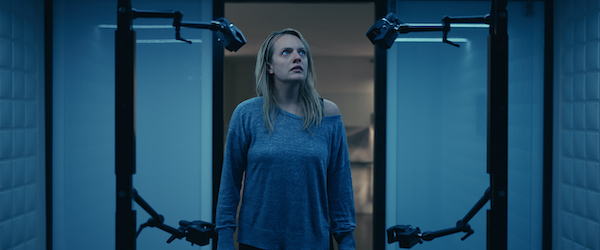
ReelBob: ‘The Invisible Man’ ★★★
By Bob Bloom
In the original 1933 “The Invisible Man,” chemical scientist Jack Griffin (Claude Rains) accidentally discovers the secret of invisibility while conducting a series of tests on an obscure drug called monocane.
What Griffin doesn’t know is one of the properties of monocane drives people mad.
Well, if you’ve seen the movie, you know the rest.
James Whale’s “The Invisible Man” spawned a series of sequels and spin-offs
using the idea of an invisible man.
In the last few years, Universal has been trying to reboot its “Classic Monsters” series of the 1930s and ’40s — and with very little success. “Dracula Reborn,” “The Wolfman” and “The Mummy” were critical disasters — all receiving rotten scores at Rotten Tomatoes — 24 percent fresh for “Dracula Reborn,” 34 percent for “The Wolfman” and 16 percent for “The Mummy.”
Now, comes “The Invisible Man,” starring Elisabeth Moss, Aldis Hodge and Oliver Jackson-Cohen, written and helmed by writer-director Leigh Whannell (“Saw” and “Insidious” franchises).
This “Invisible Man” can serve as a template on how to make relevant and contemporize an old horror–sci-fi chestnut, making it more accessible and appealing to modern, young audiences.
This version does away with laboratory Bunsen burners and beakers and relies on something viewers can relate to — technology — as the impetus for its man whom no one sees.
Plus, the main focus of the story isn’t Jackson-Cohen’s Adrian Griffin, but his mistreated girlfriend, Cecilia Kass (Moss).
The movie opens with Cecilia quietly fleeing Griffin’s fortress-like mansion as if she were staging a prison break.
Griffin and Cecilia’s relationship, we later learn, was one in which the young woman was constantly abused mentally and physically.
She finds a haven in the home of her friend, James (Hodge), and his teenage daughter, Sydney (Storm Reid).
At first, Cecilia is too traumatized to even leave the house; she is constantly looking out the window or over her shoulder, dreading an appearance by Griffin.
Two weeks later, she learns he is dead — a suicide. Cecilia is relieved, but still bears the emotional scars of Griffin’s ill treatment of her.
Later, of course, strange things begin to happen around the house, and the frazzled Cecilia becomes convinced that Griffin is alive and is stalking her.
No one, however, believes her. They simply see a fragile woman still suffering from her past experiences.
The way Whannell, with the help of cinematographer Stefan Duscio, composer Benjamin Wallfisch and the movie’s sound and special-effects teams, has constructed the movie makes “The Invisible Man” feel like a #MeToo horror outing–psychological thriller hybrid.
The camera slowly pans around, showing nothing but the flutter of a window curtain or something that looks out of place. We hear soft, strange sounds, but really cannot connect them to anything.
We are drawn in and engrossed, waiting for something to jump out of nowhere.
We soon come to realize that Griffin is indeed alive — and invisible — and using his new power to gaslight Cecilia.
Unlike the 1933 version where you can sympathize with Jack Griffin’s raving madman because it was caused by a drug, Adrian Griffin is a true monster torturing Cecilia into near madness as punishment for her perceived disloyalty.
And Griffin’s background as a technological genius allows us to accept that he can create a device to make it seem that he is invisible.
“The Invisible Man” is propelled by Moss’s intense performance. We know Griffin is lurking around, but her agitation and near hysterics plant a seed of doubt that perhaps Cecilia is indeed a bit insane and imagining she is being persecuted.
Whannell makes a wise choice emphasizing the plight of Cecilia, rather than the tired old clichés of an invisible man running amok. It makes it easier for the audience to accept the premise and identify with Cecilia’s situation.
The movie is grip-your-armchair tense, filled with ominous music and sounds that rivet us to the screen.
Though released by Universal, “The Invisible Man” was produced by Jason Blum’s Blumhouse Productions, which is making still another attempt to reboot Universal’s “Monster Universe” series.
And if “The Invisible Man” is any indication, Universal should stay invisible and allow Blum and Whannell to resurrect the proposed franchise.
I am a founding member of the Indiana Film Journalists Association. My reviews appear at ReelBob (reelbob.com) and Rottentomatoes (www.rottentomatoes.com). I also review Blu-rays and DVDs. I can be reached by email at bobbloomjc@gmail.com or on Twitter @ReelBobBloom. Links to my reviews can be found on Facebook, Twitter and LinkedIn.
THE INVISIBLE MAN
3 stars out of 4
(R), graphic and bloody violence, language